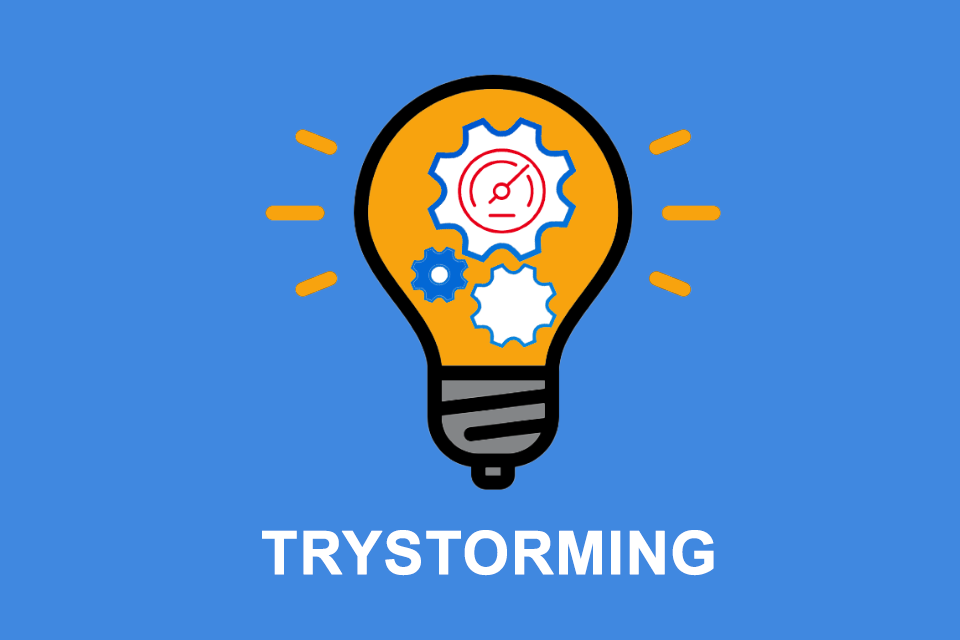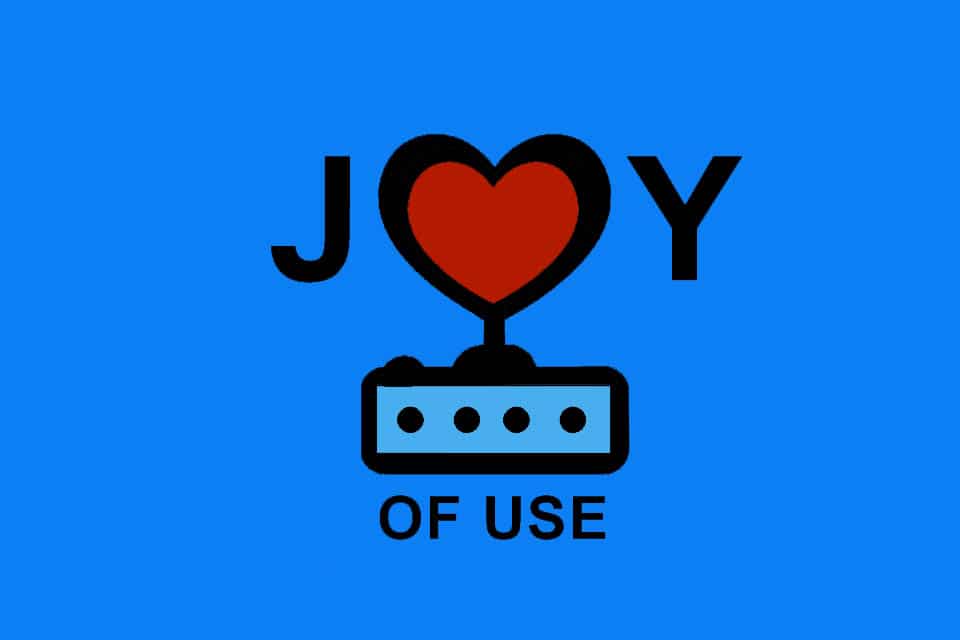What is Trystorming?
Trystorming – quickly testing ideas for practicability
“Ideas are easy. Implementation is difficult.” This is how Guy Kawasaki¹ described the real challenge in dealing with ideas. Trystorming attempts to overcome this challenge by combining brainstorming and rapid prototyping.
Brainstorming is a creativity technique in which a group of people work together to try to solve a task by collecting and developing ideas. And a prototype is a functional but simplified experimental model of a planned product, component or software. Rapid prototyping can be described literally as the rapid production of prototypes and models with the purpose of gaining early feedback regarding the suitability of a solution approach.
Trystorming is considered higher-level brainstorming because it focuses not only on brainstorming but also on the direct implementation and application of ideas. The aim of trystorming is to test ideas for their usefulness and feasibility as quickly as possible – ideally even during the course of the meeting.
Basic principles of Trystorming
Trystoming is not subject to a rigid process, but rather an approach that invites active action in addition to thinking. The following basic principles often prove useful in practice:
- Look for meaningful ideas for a concrete context, and test their feasibility as quickly as possible with the help of small prototypes.
- Simplicity is the trump card, both in finding ideas and in testing them. It’s not about perfection, but about practical and useful solutions.
- And it’s about active action and trial and error. Talk is silver, action is gold.
Or in other words: it’s about sensible ideas in a defined context that can be implemented well and it’s about action in the sense of proving that this implementation can also work in practice.
Attitude in Trystorming
Trystoming can be a useful approach if those involved show a certain attitude:
- Leaders should see themselves as part of the team and give all ideas an equal chance to be implemented, regardless of the person expressing them.
- Leaders should actively turn participants into contributors by encouraging them to try out ideas.
- Contributors are allowed to put aside their risk aversion, as it is “merely” a matter of testing ideas and there is no real risk involved.
- Contributors are allowed to be creative in a variety of ways – there are no rules about what materials to use or how perfect a prototype should be.
- Collecting ideas and implementing them is not a competition against each other, but a collaborative activity of the team with the aim of finding a solution for a concrete situation that offers advantages to customers or end users.
If the participants show such an attitude and the validation of the ideas by means of prototypes is successful, the probability of the successful implementation of the selected ideas in practice increases.
Advantages and disadvantages of Trystorming
Trystorming offers several advantages:
- It puts the focus on the possible implementation of ideas right from the start. This almost automatically leads to thinking about the production of solutions, the implementation of features or the application with customers. And this can pay off in terms of decision-making, realisation of ideas and subsequent user experience.
- “Some people reject a good idea merely because it is not theirs.” Luis Bunuel² once said. Trystorming, through collaborative prototyping, ensures that an individual’s idea quickly becomes the idea of a group that is working together to find an implementation that is as simple and useful as possible.
- If a team tries out ideas during the exchange, they will quickly realise that it is not just a theoretical exercise, but that real change is involved. This often increases interest in developing ideas and is also more fun than just collecting ideas!
- In a way, the approach objectifies the selection of ideas. It is not the idea that is promoted the loudest that wins, but the one that comes up with the most convincing prototype.
- And last but not least, the approach is also suitable in combination with other ideation techniques such as brainwriting, reverse brainstorming, 1-2-4-All, SCAMPER or starbursting.
Besides the advantages, there are also some disadvantages:
- Often participants are not trained in prototyping.
- Not all types of prototypes fit into the format. For example, the exploratory prototype addresses user acceptance and aims to identify missing features. Without users present, this is unlikely to work in a trystorming session.
- Often the sessions are too short to develop really good designs or samples,
- and it is not always possible to develop useful prototypes for all interesting ideas in a short time.
The first two points can be countered over time through practice or by means of training, although companies will of course consider how economically sensible it is to build up such specialised knowledge across the board within the organisation.
In the case of points 3 and 4, it is advisable to collect further knowledge afterwards and, if necessary, to use other procedures such as pretotyping. Pretotyping starts before prototyping. The term pretotyping is made up of the words “pretend” and “prototyping”; so it is simply pretending that a product or function exists, because that is ideally enough to identify the need for a solution, the type of use and possible challenges.
You may remember the Palm Pilot, which was a product in demand around the world at the turn of the millennium. It was a personal digital assistant and thus practically a precursor to today’s smartphones. Jeff Hawkins produced a pretotype – even though the term did not exist at the time – in which he created a dummy out of wood and paper and showed it to people over and over again for several weeks. In doing so, he wanted to find out whether he himself would use such a product regularly before investing time, effort and expense in actually producing a prototype. More than 30 million copies of the Palm Pilot have been sold worldwide.
So pretotyping is about identifying the key success criteria for a product, rather than how to develop the product successfully, cheaply or quickly; so the approach diverges somewhat from pure prototyping. Sounds like a useful variation on Trystorming, doesn’t it?
Download the Ideation Whitepaper for free now.
Everything important about Ideation at a glance.
- Definition and tips from practice
- Idea evaluation
- Methods such as reverse and round robin brainstorming, headstand technique, scamper, starbursting, brainwriting, brain dumping, Osborn checklist or 1-2-4-All in detail
Knowledge on 17 pages to take away.
How important is it for the application of Trystorming that all participants have experience in developing prototypes? Or put another way: Could it be sufficient if, for example, every third participant has the relevant experience and the groups for developing prototypes are put together accordingly?
Notes:
[1] Guy Kawasaki is an entrepreneur, technology evangelist and author. In 1984 he was also responsible for marketing the Macintosh computer.
[2] Luis Bunuel was a Spanish film director and producer and one of the most important representatives of surrealist film.
In the course of trystorming, one also likes to speak of protostorming.
If you like the article or would like to discuss it, please feel free to share it in your network. And if you have any comments, please do not hesitate to send us a message.
And here you will find additional information from our Smartpedia section:




